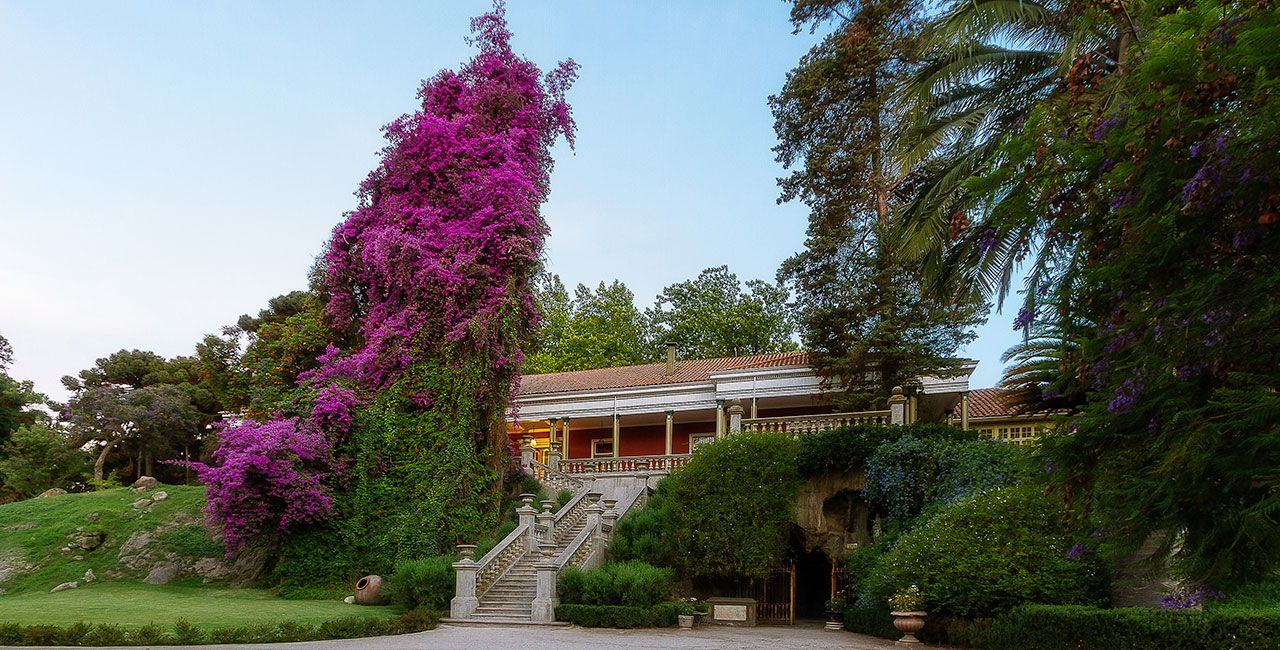Are you ready to explore
this centenary Park?
Are you ready to explore
this centenary Park?




In 1991, due to a shortage of Syrah, Viña Santa Rita imported the little-known Petite Sirah from the United States. Upon arrival in Chile, this variety was grafted onto old pergola vines to respect the quarantine process when introducing new grapes to the country. But even when it could be replanted in other valleys, the original vines always gave the best results.
This is how this innovative oenological project was born. The label is inspired by the extraordinary bougainvillea which currently grows at the front of the staircase in the Hotel Casa Real, which blooms every year in summer, all dressed up in mauve.
The prestigious wine guide Descorchados, written by wine journalist Patricio Tapia, awarded 92 points to the 2017 vintage, highlighting how the warmth of the Central Valley this season was reflected in its fruity, jammy and spicy notes. Its power in the mouth, powerful tannins and the scent of spice and coffee. "An old-school style, the kind that was made in Chile a decade ago."

The Petite Sirah vineyard covers just two hectares and is made up of vines that were grafted onto a pergola more than three decades ago.
Alto Jahuel is located at the foothills of the Andes Mountains, sitting 565 metres above sea level and 30 kilometres to the south of Chile’s capital, Santiago. The vineyards are located upon Quaternary alluvial deposits and the first vines were planted here in the mid-1600s.
The Mediterranean climate of Alto Jahuel is characterized by its long dry season. Rainfall is mainly concentrated in the winter months with an average annual precipitation of 380 mm. Spring is cool and dry, while the summers are hot with temperatures reaching above 30ºC. The influence of the Andes Mountains creates dramatic thermal oscillation between day and night. Temperatures start to lower at the end of summer and the beginning of autumn, which allows the grapes to mature gradually with a good concentration of fruit and the correct level of tannins.
The loam soil has a layer of clay that retains humidity and other stones which facilitate drainage, meaning that the vineyard does not heavily depend on external irrigation.

On the nose, it’s a wine that shows great elegance, with lively aromas of black fruit balanced with sweet spices, as well as nuances of earth and smoke mixed with balsamic notes that are typical of Maipo. In the mouth, its lovely initial sweetness gives way to a juicy acidity. Its long finish has smokey notes of chocolate and spices.
